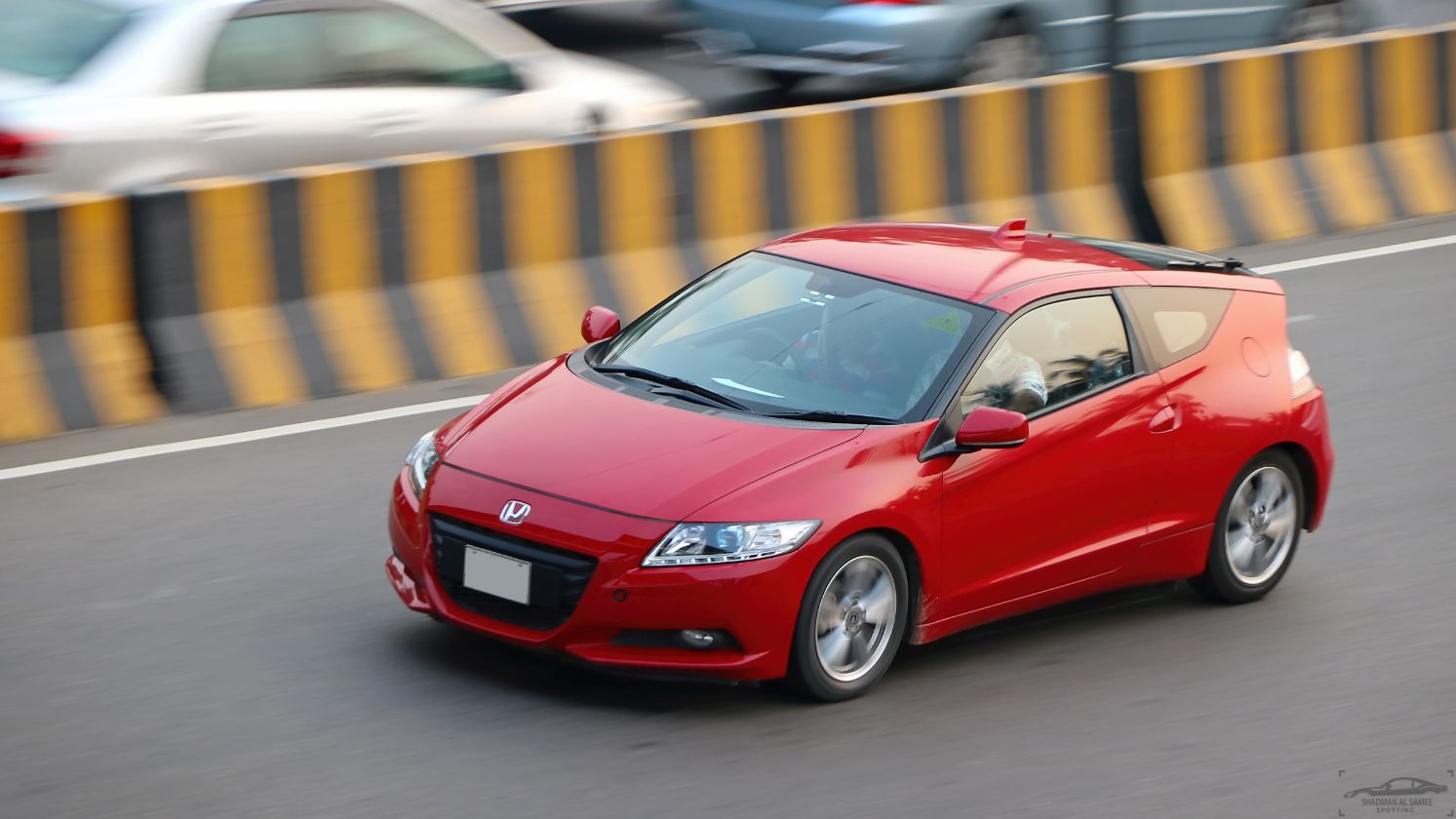Prototypes You'll Never Unsee
Design studios don't always play it safe. When there's no factory line to worry about, the results can get interesting. Over the years, automakers have revealed prototypes that sparked awe or awkward silence, and we'll show you both here. Before we get to the near-hits, let's first tour the wild misses.
1. Bertone Birusa (2003)
Fashioned atop a BMW Z8, the Birusa turned subtlety into spectacle. Features like its scooped flanks and transparent roof overwhelmed the grand touring platform beneath. Bertone hoped it'd signal digital luxury, but critics dismissed it as visually cluttered—technology showcased without a coherent design message.
 No machine-readable author provided. ChiemseeMan assumed (based on copyright claims). on Wikimedia
No machine-readable author provided. ChiemseeMan assumed (based on copyright claims). on Wikimedia
2. Peugeot Moovie (2005)
Compact yet wildly rotund, the Moovie looked more like a Dyson vacuum than a city car. Peugeot's eco-conscious experiment placed huge polycarbonate panels where bodywork should've been. Designed by André Costa at just 23, it emphasized recyclability over visibility. Even the rear windows were completely missing.
3. Citroën Karin (1980)
Pyramid schemes don't usually involve steering wheels, but the Karin brought geometry to the road. Its triangular glass canopy enclosed a central cockpit flanked by two awkward passenger seats. Doors opened upwards like insect wings. While flashy, it was impractical in tight spaces or low ceilings.
 Rob Bogaerts / Anefo on Wikimedia
Rob Bogaerts / Anefo on Wikimedia
4. Packard Twelve (1999)
Risen from brand oblivion, the Packard Twelve tried to blend 1930s opulence with Y2K bulk—and failed spectacularly. Clunky faux-classical fenders overwhelmed its proportions, leading to only one unit being built and auctioned. It now rests in a museum.
5. Fiat Oltre (2005)
Meet the Hummer's Italian cousin, spawned by Fiat and Iveco. The Oltre sat high, squared-off, and armored like it expected to roll through a warzone, not Milan. Its 3.0L diesel engine delivered torque over style. Military-grade inspiration clearly missed the civilian mark.
6. Ford 021C (1999)
Minimalism went maximal with the 021C. Designed by Marc Newson, its jellybean aesthetic and suicide doors screamed "concept-only." Dashboard features slid out like drawers and taillights floated. The car debuted in Tokyo as a design experiment, showcasing Ford's vision of future urban mobility.
7. Schlörwagen (1939)
Nicknamed the "Pillbug," this aerodynamic prototype looked like a silver bread loaf in motion. German engineers pushed efficiency hard and achieved unheard-of drag coefficients. Its 0.186 Cd still beats many EVs today, though its design never advanced due to WWII disruption and zero production interest.
 MEG Design Studio on Wikimedia
MEG Design Studio on Wikimedia
8. Cadillac Cyclone (1959)
Rocket age excess hit a peak with Cadillac's Cyclone. Giant nose cones housed radar sensors, while a bubble-top canopy retracted like that of a fighter jet. The car featured infrared crash-avoidance tech decades ahead of its time—bold innovation wrapped in pure Cold War paranoia.
 mashleymorgan from Alameda on Wikimedia
mashleymorgan from Alameda on Wikimedia
9. Vauxhall Equus (1978)
Styled like a spaceship but powered by a V8, the Equus blended wedges and chrome into a confused silhouette. Designed by Wayne Cherry, it aimed to preview GM's European future. Instead, it faded into obscurity, offering no mechanical breakthroughs.
 Riley from Christchurch, New Zealand on Wikimedia
Riley from Christchurch, New Zealand on Wikimedia
10. Chevrolet FNR (2015)
FNR stands for "Find New Roads." However, this pod-like concept took a route few wanted. Gullwing doors, laser headlights, and eye-controlled navigation hinted at sci-fi ambition. Yet, its jagged surfacing and impractical layout lacked real usability.
 Chevrolet FNR Concept-The future Concept car by Cars4Indie | C4I
Chevrolet FNR Concept-The future Concept car by Cars4Indie | C4I
You've seen the ones we're glad never left the stage. Now, let's move on. These next concepts looked good and made not being built feel like a loss.
1. Audi Avus Quattro (1991)
Made from polished aluminum and powered by a (theoretical) W12, the Avus Quattro screamed performance sculpture. Italdesign's influence showed in every crisp line. Though it used a dummy engine in Tokyo, its curves inspired future Audis—especially the R8.
 Hubert Berberich (HubiB) on Wikimedia
Hubert Berberich (HubiB) on Wikimedia
2. Ford GT90 (1995)
Ford called it "the world's mightiest supercar," and with a 720-hp quad-turbo V12, it almost was. The GT90 wore stealth bomber styling, built with carbon fiber and ceramic tiles. It was tested and filmed, and its extreme edge previewed Ford's design DNA for decades.
 Mark Woodbury from England on Wikimedia
Mark Woodbury from England on Wikimedia
3. Mazda Furai (2008)
Furai, meaning "sound of the wind," blurred the line between track monster and art. With its Le Mans chassis and rotary engine running E100 ethanol, it roared with innovation. Tragically, it caught fire during a Top Gear shoot.
4. Cadillac Sixteen (2003)
Long and low, the Sixteen was unapologetically stately and flaunted a 13.6-liter V16 engine and hand-stitched detail inside. It fused prewar luxury with 21st-century sleekness. GM explored production, but economics killed the dream. The DNA survived in later Cadillacs.
 That Hartford Guy from Hartford, Connecticut, USA on Wikimedia
That Hartford Guy from Hartford, Connecticut, USA on Wikimedia
5. Chrysler ME Four-Twelve (2004)
A 6.0-liter V12 with four turbochargers sat behind the driver in this concept that screamed potential. Carbon fiber bodywork kept it light and Chrysler stunned Detroit with a 248 mph estimate. The prototype reached 0–60 in 2.9 seconds—faster than a McLaren F1 at the time.
 pingping from San Francisco, USA on Wikimedia
pingping from San Francisco, USA on Wikimedia
6. Buick Avista (2016)
Buick ditched the grandpa stigma overnight with the Avista, a sharp, flowing coupe that looked ready for the Autobahn. Underneath was Camaro DNA, but outside, it whispered Aston Martin. GM shelved it to prioritize SUVs despite the concept winning EyesOn Design awards that year.
 JOHN LLOYD from Concrete, Washington, United States on Wikimedia
JOHN LLOYD from Concrete, Washington, United States on Wikimedia
7. Jaguar C-X75 (2010)
Turbines up front, electric motors at the wheels—Jaguar chased radical innovation with the C-X75. This hybrid supercar with exotic lines matched concept flair with engineering ambition. Five working prototypes were built, and one is preserved at the British Motor Museum for public viewing.
 David Merrett from Daventry, England on Wikimedia
David Merrett from Daventry, England on Wikimedia
8. Lamborghini Miura Concept (2006)
Lamborghini revisited its most iconic silhouette, blending old-school beauty with modern aggression. Walter de Silva crafted it as a design tribute. Despite public demand, Lamborghini didn't produce it and cited a forward-looking strategy anchored by the Murciélago and Gallardo lineages.
 smartvital from Berlin, Germany on Wikimedia
smartvital from Berlin, Germany on Wikimedia
9. Mercedes-Benz C112 (1991)
Don't confuse it with the CLK-GTR—this one came first. With active aero and a V12, the C112 was Mercedes' nod to the Porsche 959 era. Only one prototype was built, and it now lives in the Mercedes-Benz Museum in Stuttgart as a technology showcase.
 Detectandpreserve on Wikimedia
Detectandpreserve on Wikimedia
10. Renault Trezor (2016)
Trezor stunned Paris with its clamshell canopy and fluid surfacing—like a concept carved from mercury. Powered by a 350 hp electric motor, it blended art and aerodynamics. The one-off coupe influenced Renault's future design language, especially the front-end signature lighting seen in later models.














